Post by Lee on Apr 20, 2007 9:15:16 GMT 1
Family:
boidae
Common name:
boa constrictor
Latin name
boa constrictor imperator
Sub species:
Red tailed boas(constrictor) : include the guayuan and Suriname types (known as the
true red tailed boas )
Hogg island boas: an island species that displays an overall light colouration and speckling and rate as one of the more desirable boas of the group.
Argentinean boa(occidentalis): a boa type that is very dark almost black with light patterning and bands that run down its body as adults
Dwarf boas : a group of boas that are getting increasingly popular due to their smaller size which include sonoran,crawl cay, Nicaraguan and el Salvador
Ease of care
Beginner/intermediate:
Eventual size
4-6ft in some boas but larger females and red tailed boas can reach unto 12ft +
Vivarium size
6x2x2 is a good size even for the larger boa
Basic notes
They make really nice animals as tame very well and with breeders of them very easy to find but their size could be a bit daunting to someone ill prepared so prior research is needed before taking on such an animal..theres many variations being made today such as albino,sunglow,pastel,snow and so on
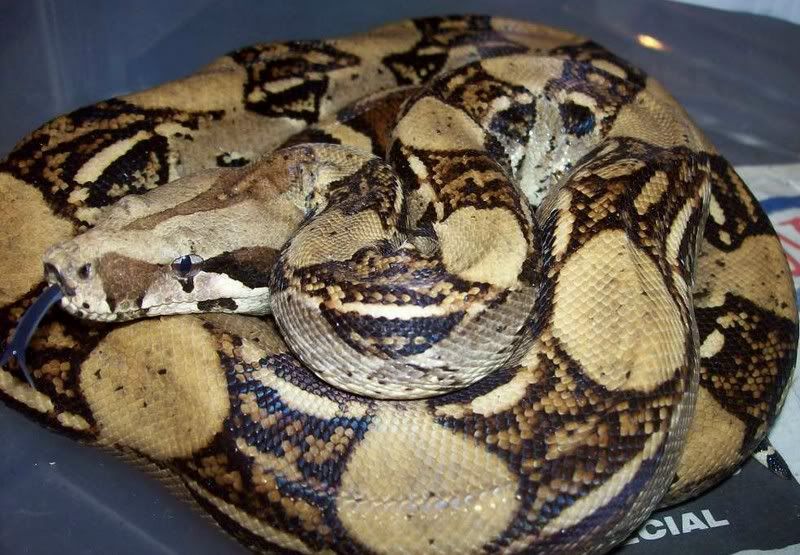
Family:
boidae
Common name
Royal or ball python
Latin name:
Python regius
Ease of care
Beginner/intermediate
Eventual size
4-6ft
Vivarium size
3ft x 1.5ft x 1.5ft
Basic notes
These snakes can be very nervous so not that good for people looking for a handleable snake and is worth the extra effort trying to find captive bred animals as these will be much better to feed than the captive farmed animals that are sold frequently. Security is very important with keeping these snakes so a few hides in the cage will make them settle in quicker…many patterning types are found in these such as granites, reduced patterning and tiger banded also ,many morphs like spiders,albinos,pied so are a very popular snake that come in different types.
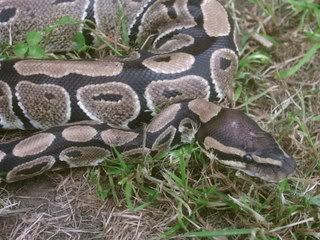
Family:
boidae
Common name
Amazon tree boa
Latin name
Corallus hortalanus
Ease of care
Intermediate
Eventual size
5-7ft
Vivarium size
A 2ft cube(2x2x2) is ideal
Basic note
Humidity and heat is very important for caring for these animals and being of an arboreal nature plenty of branches to climb on is good in the cages of these snakes. They can be a little temperamental to start with but make great display animals…a variety of patterning and colours can be produced by two very normal looking parents when bred…types include garden and Halloween phase,paradox,red,orange,yellows etc

Family:
boidae
Common name
Rainbow boa
Latin name
epicrates cenchria
Sub species
Brazilian rainbow(cenchria
Columbian rainbow(maurus)
Argentine(alvarezi)
Peruvian(gaigei)
Paraguay(barbouri)
Ease of care
intermediate
Eventual size
5-8ft
Vivarium size
4x2x2 is a good size for an adult rainbow boa
Basic notes
These rate as some of the most beautiful snakes in reptile keeping today due to their colouration and scale iridescence and need humidity as they are rainforest living animals but is easy to achieve in the right set up and these snakes like the occasional climb so branches will make a welcome addition to their cage. As neonates they are said to be a little temperamental but with time and handling they do become tame adults.
Family:
boidae
Common name
Rosy boas
Latin name
Lichanura trivirgata
Sub species
Coastal(roseofusca)
Desert(gracia)
Mid Baja(saslowi)
Mexican(trivirgata)
Ease of care
beginner
Eventual size
2-3ft
Vivarium size
24-30’’ x 12’’ x 12’’
Basic notes
Being of a small size and their care needs being relatively straightforward these make good pets for beginners. These need low humidity so good ventilation is good with these types of snakes as well as a comfy hide in the cage and a small water bowl for drinking.
Family:
boidae
Common name
Sand boas
Latin name
Eryx colubrinus
species
West African(colubrinus)
Kenyan(loveridgei)
Rough scaled(coninus)
Sri lankan(brevis)
Indian(eryx johnii)
Ease of care
beginner
Eventual size
2-3ft
Vivarium size
2 x 1.5 x 1.5ft would do a pair
Basic notes
they are slowly becoming a popular snake to keep there are breeders all around the uk that you can get your sand boa from where you are guaranteed a feeding snake with full sets of feeding and shedding records and the help if you get into difficulties…they need a deep substrate of sand to burrow in as they favour this set up…the Kenyans are bred into different colourations such as snow, flame and anery.

Family:
boidae
Common name
Dumerils boa
Latin name
Acrantophis dumerili
Related speices
Madagascan ground boa(acrantophis madagascarensis
Ease of care
intermediate
Eventual size
5-8ft
Vivarium size
4x2x2
Basic notes
These snakes have amazing patterning and make nice boas as pets. Due to their status on the CITES list micro chipping should be done with any snakes of this species...they are occasional climbers so the addition of any branches are welcomed and a large water bowl to soak in and a substrate suitable for humidity retaining like orchid/rainforest bark.
Family:
boidae
Common name
Burmese python
Latin name
Python molurus bivattus
similar species
Python molurus pimbura(Ceylon python)
Python molurus molurus (Indian python)
Ease of care
Advanced
Eventual size
Anywhere between 13-20ft +
Vivarium size
6x3 but up to 8x4x4 are large enough for the larger females
Basic notes
Due to their large size and eventual housing needs these snakes are best kept to those with adequate space for these snakes…..ideally it will take 1 or more other people to safely handle such a large reptile or to assist in duties such as cleaning incase of difficulties with larger animals but in the right care they make good animals and with efforts of breeding many colourations and patterning are available such as the albino,granite,green which make them popular to larger snake keepers worldwide
Family:
boidae
Common name
Carpet python
Latin name
Morelia spilota
species
Coastal(McDowelli)
Jungle(cheynei)
Irian jaya/west Papuan(variegata)
Diamond python(Morelia spilota spilota)
New guinea carpet python(morelia harrisoni)
Ease of care
intermediate
Eventual size
6-10ft dependant on type
Vivarium size
4x2x2 but height can be bigger as these snakes like to climb
Basic notes
These snakes are named due to their striking patterns on their skin. These snakes are very popular as pet snakes due to their manageable size and temperament as adults and varying patterning particularly in some jungle carpet pythons where they exhibit high amounts of yellow which makes them very desirable to snake keepers….these snakes love to climb so branches and bark can be situated around the vivarium for this purpose and widely bred so very easy to source hatchlings through pet shops or advertisements
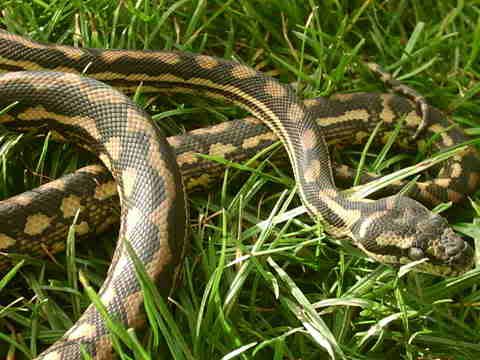
Family:
boidae
Common name
Children’s and spotted pythons
Latin name
Anterasia maculosa/anterasia childreni
Other species
Stemsons python(anterasia stimsoni)
Anthill python(Antaresia perthensis )
Ease of care
beginner
Eventual size
4-6ft
Vivarium size
3x2 is good for a pair of these snakes
Basic notes
These snakes are very easy to keep requiring a relatively simple set-up in comparison to many boid types. Being of a more slender girth than most the boids they are perfect for keepers who have previously kept colubrids as pet animals as they are not overpowering or large in size so are a good introduction to the python side of reptile keeping for them….
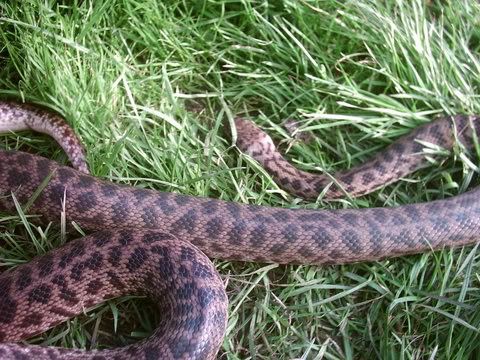
Family:
boidae
Common name
Blood python/short tailed python
Sub species
Python curtus brongersmai
Python curtus
Ease of care
intermediate
Eventual size
5-7ft
Vivarium size
4x2x2 is big enough for adults
Basic notes
These snakes need good humidity and ventilation in their cage and can be very temperamental with exceptions to some very tame individuals. They need a good amount of hiding spots and is best to keep it low as being of a bulky build they could be very clumsy climbers hence could cause an injury but are a good manageable size to those who find this species desirable and are nicknamed slugs due to their squat short build and the feeling of their bodies is very soft
Family:
colubridae
Common name
Corn snake
Latin name
Pantherophis guttatus
Ease of care
Beginner
Eventual size
4-5ft but can be up to 6ft particularly in hybrids
Vivarium size
3 x 1.5 x 1.5ft
Basic notes
these are getting popular snakes due to their tame nature and manageable size and the variety of morphs available in pet shops and breeders makes the decision even harder for the keeper but whatever morph/type you have, you are guaranteed a tame snake that settles fast and feed very well on defrosted mice which are easily bought from pet shops but there are exceptions to this but with a little more time and patience will be back to normal…they are often hybridised with most north American colubrids such as king snakes(jungle corns),rat snakes(copper,harvest,creamisicle) and pituophis(rodeo/desert cornsnakes).

Family:
Colubridae
Common name
American rat snake
Latin name
Pantherophis obselota
Sub species
Yellow(quadrivittata)
Black(obsoleta)
Grey(spilodes)
Texas(linderhemri)
Everglades(rossanelli)
Bairds rat snake(Elaphe bairdi)
Fox snake(Elaphe vulpina)
Central American rat snake(Elaphe flavirufra)
Trans pecos rat snake(Bogertophis subocularis)
Baja rat snake(Bogertophis rosaliae)
Great plains rat snake (Emoryi)
Ease of care
Beginner/intermediate
Eventual size
4-7ft
Vivarium size
4x2x2 would be fine for up to a pair of larger animals but some prefer a little more height
Basic notes
rat snakes have the reputation of being very aggressive snakes which is true in some individuals or in hatchlings but do tame down to become a tame pet snake and unlike their more popular family members the corn snakes they do spend a lot of time in branches which could be due to their instinct of feeding on fledgling birds. They are available in different shapes and sizes and in some there are albino and leucistic strains and lots more pattern and colour variations sometimes often bred with corns to make hybrids
Occasionally there are intergrades between two of these available to keepers but usually are lower in price but are great snakes to keep just as the pure breeds.
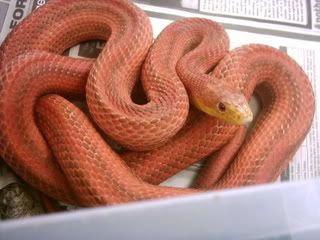
Family:
colubridae
Common name
king snakes
Latin name
Lampropeltis getula
Sub species
Californian(californiae)
Florida(floridana)
Desert(splendida)
Speckled(Holbrooki)
Black king(niger)
Mexican black(nigrita)
Eastern/chain(getalus)
Ease of care
beginner
Eventual size
4-6ft
Vivarium size
3 x 1.5ft x 1.5ft
Basic notes
king snakes are named as in the wild they are primarily snake eaters in which their main prey includes the rattlesnake(crotalus sp) which are constricted(death is by suffocation rather the crushing) before being eaten and a reason why its best to keep them separate to prevent such mishaps of them eating their cage mates
They range in many colourations and patterns which makes them popular and being relatively tame but you do get the odd individual that musks and bites
Its scalation is unkeeled so is smooth to the touch and very thick scaling compared to other species of snakes and markings and patterning are variable and dependant on type, their mouths aren’t as elastic/stretchy as other snakes so in a captive environment finding suitable sized prey is needed.
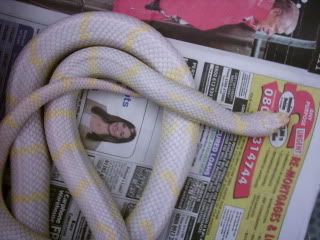
Family:
boidae
Common name
Bull snake
Latin name
Pituophis catenifer sayi
Sub species
Gopher snake (Pituophis catenifer)
Pine Snake(Pituophis melanoleucus )
Ease of care
Easy
Eventual size
4-8ft
Vivarium size
4x2 would be good for adult pair
Basic notes
These snakes are very large stocky snakes but with their defensive hissing and striking at first they can be a little off putting but in time make good pet snakes and with captive breeding efforts many colourations are available to keepers today and being a manageable size are good to go for and they include albinos and snows and can be found at most pet shops or breeders through advertisements and reptile shows.
They are very strong so is best for younger keepers to be supervised while handling these snakes.

Family:
colubridae
Common name
African house snake
Latin name
Lamprophis fuliginosus
Ease of care
beginner
Eventual size
3-5ft
Vivarium size
3ft long cage is suitable for a pair of these snakes
Basic notes
These snakes resemble a boid rather than a colubrid but browns have the most amazing colour and really worth the extra effort finding as they make good pets and supposedly are prolific breeders in captivity and are becoming increasingly popular as a alternative to more commoner kept colubrids in reptile keeping and also come in different phases like green. Red and lace phase as well as albino types.

Family:
colubridae
Common name
Garter/ribbon snake
Latin name
Thamnophis
Ease of care
Florida garter(Thamnophis sirtalis sirtalis)
Chequered(Thamnophis marcianus)
Red sided(Thamnophis sirtalis infernalis)
Eastern Ribbon Snake(Thamnophis sauritus )
Western ribbon(Thamnophis proximus proximus)
Eventual size
3-5ft
Vivarium size
3ft cage would do a pair of these snakes
Basic notes
These snakes are very slender and fast but do calm down to accept occasional interaction. In a captive environment they will take fuzzy mice but normal fare are fish in which things like gamma fish can be used which come in frozen packs but it is best to boil and cool the fish before feeding to remove an enzyme called thaimanaise which destroys vitamin B in the snakes body and if not prepared it causes general disorientation and eventually could prove fatal but thankfully most CB animals will take mice
They require a large water bowl to soak in as they enjoy the occasional soak.
Family
colubridae
Common name
Milk snake
Latin name
Lampropeltis triangulum
Sub species
Pueblan(Campbelli)
Nelsons(nelsoni)
Honduran(hondurensis)
Sinoloan(sinoloanae)
Ease of care
beginner
Eventual size
3-5ft
Vivarium size
2.5ft- 3ft long cage would do a single adult milk snake
Basic notes
milk snakes are named as folklore says they drink cows milk as they were found in barns where cows were kept but they were actually after the mice and rats that come to feed on the grain and other food in the barns.
They are brightly coloured snakes with bright red and black bands but are available in most other colourations such as albinos but Hondurans are bred into a wide range of colourations such as snow, tangerine and hypomelanistic..like their close family members the king snakes they have very small mouths so smaller prey items are much better in a captive environment. They are generally tame but you do get the odd musking and bite individual

Family:
colubridae
Common name
Asian rat snakes
Sub species
Taiwanese beauty rat snake(Orthriophis taeniura friesi)
Ridleys cave racer(Orthriophis taeniura ridleyi)
Blue beauty rat snake(Orthriophis taeniura )
Radiated rat snake(Elaphe radiata)
Diones rat snake(elape dione)
Russian rat snake(Elaphe schrencki)
Ease of care
Easy to above but advanced to most other members of the Asian rat snakes as care needs are very advanced and most being of a wild caught nature
Eventual size
4-9ft
Vivarium size
4x2x2 is good even for the larger of the rat snakes
Basic notes
The species of rat snakes above make good snakes as pets as their needs are very straightforward and they are mostly very accepting of handling…they range in different patterning and colour.
Like most rat snakes these love to climb and soak occasionally so branches and a large water bowl are good additions to the cage and are mostly greedy feeders so feeding is not a problem and get to a manageable size except the orthriophis species but even at a large size are not overpowering and remain calm snakes as adults
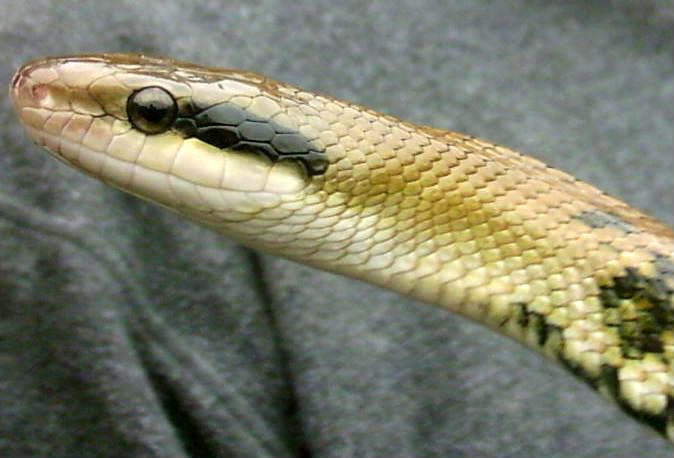
Family:
colubridae
Common name
Western hognose
Latin name
Heterodon nasicus
Sub species
Mexican Hognose (Heterodon n. kennerlyi)
Dusty Hognose (Heterodon n. gloydi)
Eastern Hognose (Heterodon platirhinos)
Southern Hognose (Heterodon simus)
Madagascan Giant Hognose (Leioheterodon madagascariensis)
Malagasy Speckled Hognose (Leioheterodon geayi)
Malagasy Blonde Hognose (Leioehterodon modestus
Argentine Hognose (Lystrophis d. dorbignyi)
Argentine Hognose (Lystrophis d. chacoensis)
Patagonian Hognose (Lystrophis d. orientalis)
Uruguayan Hognose (Lystrophis d. uruguayensis)
Tricolor Hognose (Lystrophis semicinctus)
Tricolor Hognosed Snake (Lystrophis pulcher)
Ease of care
Easy/intermediate depending on type
Eventual size
2-2.5ft in westerns but the Madagascan types can get up to 4-6ft
Vivarium size
2ft x 1ft x 1ft is suitable for a large western hognose
Basic notes
The western hognose is available at most places selling reptiles or there are breeders that advertise through advertisement sites or the reptile shows throughout the country…their care needs are quite straightforward needing a small water bowl and hides and good ventilation throughout the cage
They are mildly venomous being a rear fanged species so extra caution should be taken when dealing with these snakes but bluff strike usually and tame down to accept occasional handling in time

Family:
colubridae
Common name
Rough green snake
Latin name
Opheodrys aestivus
Ease of care
intermediate
Eventual size
2ft
Vivarium size
2x1x1 would do one
Basic notes
These snakes are best avoided if its your first snake as being WC(wild caught) will be full of parasites and be very ill so is best kept to more experienced keepers….they need a nice planted terrarium and plenty of branches as they like to climb. These snakes are insectivores so would be worth the extra effort locating CB for those who are a little squeamish of dead rodents but like the look of snakes
this and the lizard choices will be updated in time with more speices but if you hasve any suggestions for good animals to put there feel free to pm me and ill add it
boidae
Common name:
boa constrictor
Latin name
boa constrictor imperator
Sub species:
Red tailed boas(constrictor) : include the guayuan and Suriname types (known as the
true red tailed boas )
Hogg island boas: an island species that displays an overall light colouration and speckling and rate as one of the more desirable boas of the group.
Argentinean boa(occidentalis): a boa type that is very dark almost black with light patterning and bands that run down its body as adults
Dwarf boas : a group of boas that are getting increasingly popular due to their smaller size which include sonoran,crawl cay, Nicaraguan and el Salvador
Ease of care
Beginner/intermediate:
Eventual size
4-6ft in some boas but larger females and red tailed boas can reach unto 12ft +
Vivarium size
6x2x2 is a good size even for the larger boa
Basic notes
They make really nice animals as tame very well and with breeders of them very easy to find but their size could be a bit daunting to someone ill prepared so prior research is needed before taking on such an animal..theres many variations being made today such as albino,sunglow,pastel,snow and so on

Family:
boidae
Common name
Royal or ball python
Latin name:
Python regius
Ease of care
Beginner/intermediate
Eventual size
4-6ft
Vivarium size
3ft x 1.5ft x 1.5ft
Basic notes
These snakes can be very nervous so not that good for people looking for a handleable snake and is worth the extra effort trying to find captive bred animals as these will be much better to feed than the captive farmed animals that are sold frequently. Security is very important with keeping these snakes so a few hides in the cage will make them settle in quicker…many patterning types are found in these such as granites, reduced patterning and tiger banded also ,many morphs like spiders,albinos,pied so are a very popular snake that come in different types.

Family:
boidae
Common name
Amazon tree boa
Latin name
Corallus hortalanus
Ease of care
Intermediate
Eventual size
5-7ft
Vivarium size
A 2ft cube(2x2x2) is ideal
Basic note
Humidity and heat is very important for caring for these animals and being of an arboreal nature plenty of branches to climb on is good in the cages of these snakes. They can be a little temperamental to start with but make great display animals…a variety of patterning and colours can be produced by two very normal looking parents when bred…types include garden and Halloween phase,paradox,red,orange,yellows etc

Family:
boidae
Common name
Rainbow boa
Latin name
epicrates cenchria
Sub species
Brazilian rainbow(cenchria
Columbian rainbow(maurus)
Argentine(alvarezi)
Peruvian(gaigei)
Paraguay(barbouri)
Ease of care
intermediate
Eventual size
5-8ft
Vivarium size
4x2x2 is a good size for an adult rainbow boa
Basic notes
These rate as some of the most beautiful snakes in reptile keeping today due to their colouration and scale iridescence and need humidity as they are rainforest living animals but is easy to achieve in the right set up and these snakes like the occasional climb so branches will make a welcome addition to their cage. As neonates they are said to be a little temperamental but with time and handling they do become tame adults.
Family:
boidae
Common name
Rosy boas
Latin name
Lichanura trivirgata
Sub species
Coastal(roseofusca)
Desert(gracia)
Mid Baja(saslowi)
Mexican(trivirgata)
Ease of care
beginner
Eventual size
2-3ft
Vivarium size
24-30’’ x 12’’ x 12’’
Basic notes
Being of a small size and their care needs being relatively straightforward these make good pets for beginners. These need low humidity so good ventilation is good with these types of snakes as well as a comfy hide in the cage and a small water bowl for drinking.
Family:
boidae
Common name
Sand boas
Latin name
Eryx colubrinus
species
West African(colubrinus)
Kenyan(loveridgei)
Rough scaled(coninus)
Sri lankan(brevis)
Indian(eryx johnii)
Ease of care
beginner
Eventual size
2-3ft
Vivarium size
2 x 1.5 x 1.5ft would do a pair
Basic notes
they are slowly becoming a popular snake to keep there are breeders all around the uk that you can get your sand boa from where you are guaranteed a feeding snake with full sets of feeding and shedding records and the help if you get into difficulties…they need a deep substrate of sand to burrow in as they favour this set up…the Kenyans are bred into different colourations such as snow, flame and anery.

Family:
boidae
Common name
Dumerils boa
Latin name
Acrantophis dumerili
Related speices
Madagascan ground boa(acrantophis madagascarensis
Ease of care
intermediate
Eventual size
5-8ft
Vivarium size
4x2x2
Basic notes
These snakes have amazing patterning and make nice boas as pets. Due to their status on the CITES list micro chipping should be done with any snakes of this species...they are occasional climbers so the addition of any branches are welcomed and a large water bowl to soak in and a substrate suitable for humidity retaining like orchid/rainforest bark.
Family:
boidae
Common name
Burmese python
Latin name
Python molurus bivattus
similar species
Python molurus pimbura(Ceylon python)
Python molurus molurus (Indian python)
Ease of care
Advanced
Eventual size
Anywhere between 13-20ft +
Vivarium size
6x3 but up to 8x4x4 are large enough for the larger females
Basic notes
Due to their large size and eventual housing needs these snakes are best kept to those with adequate space for these snakes…..ideally it will take 1 or more other people to safely handle such a large reptile or to assist in duties such as cleaning incase of difficulties with larger animals but in the right care they make good animals and with efforts of breeding many colourations and patterning are available such as the albino,granite,green which make them popular to larger snake keepers worldwide
Family:
boidae
Common name
Carpet python
Latin name
Morelia spilota
species
Coastal(McDowelli)
Jungle(cheynei)
Irian jaya/west Papuan(variegata)
Diamond python(Morelia spilota spilota)
New guinea carpet python(morelia harrisoni)
Ease of care
intermediate
Eventual size
6-10ft dependant on type
Vivarium size
4x2x2 but height can be bigger as these snakes like to climb
Basic notes
These snakes are named due to their striking patterns on their skin. These snakes are very popular as pet snakes due to their manageable size and temperament as adults and varying patterning particularly in some jungle carpet pythons where they exhibit high amounts of yellow which makes them very desirable to snake keepers….these snakes love to climb so branches and bark can be situated around the vivarium for this purpose and widely bred so very easy to source hatchlings through pet shops or advertisements

Family:
boidae
Common name
Children’s and spotted pythons
Latin name
Anterasia maculosa/anterasia childreni
Other species
Stemsons python(anterasia stimsoni)
Anthill python(Antaresia perthensis )
Ease of care
beginner
Eventual size
4-6ft
Vivarium size
3x2 is good for a pair of these snakes
Basic notes
These snakes are very easy to keep requiring a relatively simple set-up in comparison to many boid types. Being of a more slender girth than most the boids they are perfect for keepers who have previously kept colubrids as pet animals as they are not overpowering or large in size so are a good introduction to the python side of reptile keeping for them….

Family:
boidae
Common name
Blood python/short tailed python
Sub species
Python curtus brongersmai
Python curtus
Ease of care
intermediate
Eventual size
5-7ft
Vivarium size
4x2x2 is big enough for adults
Basic notes
These snakes need good humidity and ventilation in their cage and can be very temperamental with exceptions to some very tame individuals. They need a good amount of hiding spots and is best to keep it low as being of a bulky build they could be very clumsy climbers hence could cause an injury but are a good manageable size to those who find this species desirable and are nicknamed slugs due to their squat short build and the feeling of their bodies is very soft
Family:
colubridae
Common name
Corn snake
Latin name
Pantherophis guttatus
Ease of care
Beginner
Eventual size
4-5ft but can be up to 6ft particularly in hybrids
Vivarium size
3 x 1.5 x 1.5ft
Basic notes
these are getting popular snakes due to their tame nature and manageable size and the variety of morphs available in pet shops and breeders makes the decision even harder for the keeper but whatever morph/type you have, you are guaranteed a tame snake that settles fast and feed very well on defrosted mice which are easily bought from pet shops but there are exceptions to this but with a little more time and patience will be back to normal…they are often hybridised with most north American colubrids such as king snakes(jungle corns),rat snakes(copper,harvest,creamisicle) and pituophis(rodeo/desert cornsnakes).

Family:
Colubridae
Common name
American rat snake
Latin name
Pantherophis obselota
Sub species
Yellow(quadrivittata)
Black(obsoleta)
Grey(spilodes)
Texas(linderhemri)
Everglades(rossanelli)
Bairds rat snake(Elaphe bairdi)
Fox snake(Elaphe vulpina)
Central American rat snake(Elaphe flavirufra)
Trans pecos rat snake(Bogertophis subocularis)
Baja rat snake(Bogertophis rosaliae)
Great plains rat snake (Emoryi)
Ease of care
Beginner/intermediate
Eventual size
4-7ft
Vivarium size
4x2x2 would be fine for up to a pair of larger animals but some prefer a little more height
Basic notes
rat snakes have the reputation of being very aggressive snakes which is true in some individuals or in hatchlings but do tame down to become a tame pet snake and unlike their more popular family members the corn snakes they do spend a lot of time in branches which could be due to their instinct of feeding on fledgling birds. They are available in different shapes and sizes and in some there are albino and leucistic strains and lots more pattern and colour variations sometimes often bred with corns to make hybrids
Occasionally there are intergrades between two of these available to keepers but usually are lower in price but are great snakes to keep just as the pure breeds.

Family:
colubridae
Common name
king snakes
Latin name
Lampropeltis getula
Sub species
Californian(californiae)
Florida(floridana)
Desert(splendida)
Speckled(Holbrooki)
Black king(niger)
Mexican black(nigrita)
Eastern/chain(getalus)
Ease of care
beginner
Eventual size
4-6ft
Vivarium size
3 x 1.5ft x 1.5ft
Basic notes
king snakes are named as in the wild they are primarily snake eaters in which their main prey includes the rattlesnake(crotalus sp) which are constricted(death is by suffocation rather the crushing) before being eaten and a reason why its best to keep them separate to prevent such mishaps of them eating their cage mates
They range in many colourations and patterns which makes them popular and being relatively tame but you do get the odd individual that musks and bites
Its scalation is unkeeled so is smooth to the touch and very thick scaling compared to other species of snakes and markings and patterning are variable and dependant on type, their mouths aren’t as elastic/stretchy as other snakes so in a captive environment finding suitable sized prey is needed.

Family:
boidae
Common name
Bull snake
Latin name
Pituophis catenifer sayi
Sub species
Gopher snake (Pituophis catenifer)
Pine Snake(Pituophis melanoleucus )
Ease of care
Easy
Eventual size
4-8ft
Vivarium size
4x2 would be good for adult pair
Basic notes
These snakes are very large stocky snakes but with their defensive hissing and striking at first they can be a little off putting but in time make good pet snakes and with captive breeding efforts many colourations are available to keepers today and being a manageable size are good to go for and they include albinos and snows and can be found at most pet shops or breeders through advertisements and reptile shows.
They are very strong so is best for younger keepers to be supervised while handling these snakes.

Family:
colubridae
Common name
African house snake
Latin name
Lamprophis fuliginosus
Ease of care
beginner
Eventual size
3-5ft
Vivarium size
3ft long cage is suitable for a pair of these snakes
Basic notes
These snakes resemble a boid rather than a colubrid but browns have the most amazing colour and really worth the extra effort finding as they make good pets and supposedly are prolific breeders in captivity and are becoming increasingly popular as a alternative to more commoner kept colubrids in reptile keeping and also come in different phases like green. Red and lace phase as well as albino types.

Family:
colubridae
Common name
Garter/ribbon snake
Latin name
Thamnophis
Ease of care
Florida garter(Thamnophis sirtalis sirtalis)
Chequered(Thamnophis marcianus)
Red sided(Thamnophis sirtalis infernalis)
Eastern Ribbon Snake(Thamnophis sauritus )
Western ribbon(Thamnophis proximus proximus)
Eventual size
3-5ft
Vivarium size
3ft cage would do a pair of these snakes
Basic notes
These snakes are very slender and fast but do calm down to accept occasional interaction. In a captive environment they will take fuzzy mice but normal fare are fish in which things like gamma fish can be used which come in frozen packs but it is best to boil and cool the fish before feeding to remove an enzyme called thaimanaise which destroys vitamin B in the snakes body and if not prepared it causes general disorientation and eventually could prove fatal but thankfully most CB animals will take mice
They require a large water bowl to soak in as they enjoy the occasional soak.
Family
colubridae
Common name
Milk snake
Latin name
Lampropeltis triangulum
Sub species
Pueblan(Campbelli)
Nelsons(nelsoni)
Honduran(hondurensis)
Sinoloan(sinoloanae)
Ease of care
beginner
Eventual size
3-5ft
Vivarium size
2.5ft- 3ft long cage would do a single adult milk snake
Basic notes
milk snakes are named as folklore says they drink cows milk as they were found in barns where cows were kept but they were actually after the mice and rats that come to feed on the grain and other food in the barns.
They are brightly coloured snakes with bright red and black bands but are available in most other colourations such as albinos but Hondurans are bred into a wide range of colourations such as snow, tangerine and hypomelanistic..like their close family members the king snakes they have very small mouths so smaller prey items are much better in a captive environment. They are generally tame but you do get the odd musking and bite individual

Family:
colubridae
Common name
Asian rat snakes
Sub species
Taiwanese beauty rat snake(Orthriophis taeniura friesi)
Ridleys cave racer(Orthriophis taeniura ridleyi)
Blue beauty rat snake(Orthriophis taeniura )
Radiated rat snake(Elaphe radiata)
Diones rat snake(elape dione)
Russian rat snake(Elaphe schrencki)
Ease of care
Easy to above but advanced to most other members of the Asian rat snakes as care needs are very advanced and most being of a wild caught nature
Eventual size
4-9ft
Vivarium size
4x2x2 is good even for the larger of the rat snakes
Basic notes
The species of rat snakes above make good snakes as pets as their needs are very straightforward and they are mostly very accepting of handling…they range in different patterning and colour.
Like most rat snakes these love to climb and soak occasionally so branches and a large water bowl are good additions to the cage and are mostly greedy feeders so feeding is not a problem and get to a manageable size except the orthriophis species but even at a large size are not overpowering and remain calm snakes as adults

Family:
colubridae
Common name
Western hognose
Latin name
Heterodon nasicus
Sub species
Mexican Hognose (Heterodon n. kennerlyi)
Dusty Hognose (Heterodon n. gloydi)
Eastern Hognose (Heterodon platirhinos)
Southern Hognose (Heterodon simus)
Madagascan Giant Hognose (Leioheterodon madagascariensis)
Malagasy Speckled Hognose (Leioheterodon geayi)
Malagasy Blonde Hognose (Leioehterodon modestus
Argentine Hognose (Lystrophis d. dorbignyi)
Argentine Hognose (Lystrophis d. chacoensis)
Patagonian Hognose (Lystrophis d. orientalis)
Uruguayan Hognose (Lystrophis d. uruguayensis)
Tricolor Hognose (Lystrophis semicinctus)
Tricolor Hognosed Snake (Lystrophis pulcher)
Ease of care
Easy/intermediate depending on type
Eventual size
2-2.5ft in westerns but the Madagascan types can get up to 4-6ft
Vivarium size
2ft x 1ft x 1ft is suitable for a large western hognose
Basic notes
The western hognose is available at most places selling reptiles or there are breeders that advertise through advertisement sites or the reptile shows throughout the country…their care needs are quite straightforward needing a small water bowl and hides and good ventilation throughout the cage
They are mildly venomous being a rear fanged species so extra caution should be taken when dealing with these snakes but bluff strike usually and tame down to accept occasional handling in time

Family:
colubridae
Common name
Rough green snake
Latin name
Opheodrys aestivus
Ease of care
intermediate
Eventual size
2ft
Vivarium size
2x1x1 would do one
Basic notes
These snakes are best avoided if its your first snake as being WC(wild caught) will be full of parasites and be very ill so is best kept to more experienced keepers….they need a nice planted terrarium and plenty of branches as they like to climb. These snakes are insectivores so would be worth the extra effort locating CB for those who are a little squeamish of dead rodents but like the look of snakes
this and the lizard choices will be updated in time with more speices but if you hasve any suggestions for good animals to put there feel free to pm me and ill add it

